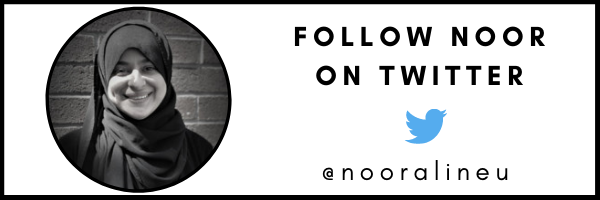TL;DR:
- There are many struggles with both in-person and remote learning during this time.
- Whichever way you cut it, there is no perfect solution given the circumstances.
- This year is not about replicating the norm. It is not about holding yourself to the same expectations you have of yourself in any other year.
- You have shown up for the future, and that is what matters.
Fall 2020 school reopening has been tricky. It has been a time of untold stress and unfathomable planning. It has required flexing of all our known boundaries and delving into the great uncertain that only a pandemic could unleash.
From “is this really a health crisis?” to a rapid global escalation, COVID-19 forced school closures across the world. For many schools in the U.S., it meant going home one day in the spring and then not returning to close the year. It meant sometimes handling one detail at a time, and other times grappling the multiple that tumbled at you. It meant reinterpreting the requirement of testing, reevaluating the necessary standards, and recreating assessment benchmarks.
And it meant understanding the systemic inequities that exist in society and realizing the role schools play in the health, nutrition, and economy of a nation.
Whichever way you cut it, there is no perfect solution given the circumstances and the financial, infrastructural, and logistical constraints that abound in both public and non-public schools. Click To TweetIt brought with it a new appreciation of how much work goes into teaching, counseling, and managing schools.
It made us ponder on what it means to be an essential worker. Parents witnessed what goes into managing a room full of students and the intrinsic role that motivation, engagement, behavior, and socialization play in learning.
Teachers across the nation flexed their creative muscles to prep drive-thru rallies, drive-in graduations, and surprise visits to their students. They returned to empty classrooms, left messages of love for their students in windowpanes, and navigated Zooming. For many, the technology integration was like a rapid crash course, a brutal boot camp, a forced initiation where they had to bring their vulnerability to the table. It meant leading a class without the confidence that decades of teaching may have given. It meant being a newbie teacher again.
Fall reopening meant reevaluating how everything needed to be done to plan a safe return for students to school. And whichever way you cut it, it is not the norm.
As we hustle and strive for normalcy, it is hard to remember that bit.
Everything is hard.
Whichever Way You Cut It: There Are Pains with Remote Learning
For those places that went remote only, the struggle of engagement is real. It means teachers sitting behind a screen and teaching blank screens. If your school requires cameras to be on, you have to work around issues of privacy and reminding your students to turn their videos on. If you are teaching from home, the hardship is in not being in your known workspace. And it’s in navigating your own children’s learning schedule if they are at home with you.
And if you are teaching in an empty classroom, it feels alienating. It still feels odd not having students, and you wonder if your administration trusts you. Side note: administration trusts you. They gain nothing from you being in school; they are providing you the necessary infrastructure to deliver the lessons, have resources, and the like.
If you are live remote teaching, the glare of the screen and the need to sit for so long is all difficult. If you are remote teaching asynchronously, it’s not easy either because it means creating lessons, crafting videos, assessing from a distance, and having office hours that still just doesn’t replicate daily in-person learning. Schools, unfortunately, would have to go remote if they didn’t have the means to create equitable and safe face-to-face learning environments. Schools may still have to go remote if the surge commands us.
[scroll down to keep reading]
Whichever Way You Cut It: There Are Pains with In-Person Learning
If you are teaching in-person, the biggest worry is the risk of exposure to the virus.
You wonder about the cleaning protocols, ventilation, disinfecting, keeping the masks or faceshields on, giving adequate mask breaks, wiping the sneeze guards, desks, and chairs, and having students maintain a 6-foot distance. Your hands feel dry and you need to sanitize and moisturize them constantly. And your mouth feels dry. Your evening online shopping searches include best masks, face braces to place under masks, and the best lip balm. And you worry about keeping the lid of your water bottle clean.
If your students are on a hybrid schedule, you struggle with seeing them only so many days.
Their work is prone to getting lost between home and school due to the gap in face-to-face attendance.
If your hybrid class is asynchronous, you struggle with making lessons for both the in-person group and the remote group of students.
You make videos and lessons that can stand alone, be done with minimal supervision, and still be meaningful. When you do see the students in person, you have the task at hand of reviewing the non-in-person day’s work and playing catch up. Transitions are a nightmarish reality in the hybrid situation. The pacing of your lesson has slowed down and you are often having to double teach in an asynchronous setting.
If your students are hybrid but synchronous via live stream, you are having to navigate teaching two sets of students in two geographical settings.
Questions abound; what mic works best? Do I need speakers for the whole class to listen to those online? Are wireless mics any good, and not overly expensive? How can I avoid tripping over the wires? How do I use a document projector and screen share? Do I need two screens? How do I share a video and make sure everybody can hear it? How do I place my laptop so I can remain engaged? The list goes on.
Whichever way you cut it, there is no perfect solution given the circumstances and the financial, infrastructural, and logistical constraints that abound in both public and non-public schools.
Yes, this is not easy. But, please remind yourself that a year like this is not about replicating the norm. It is not about holding yourself to the same expectations you have of yourself in any other year. Your lessons may have become less creative, but you have shown up for the future, and that is what matters.
About Noor Ali
Dr. Noor Ali is the principal at Al-Hamra Academy, Shrewsbury, MA and has been a veteran teacher of fifteen years in elementary and middle school grades. She is an Assistant Professor at Worcester State University. Noor is actively engaged in efforts towards social justice, inter-faith dialogue, community networking, and youth development. Noor earned her Ed.D. in Curriculum, Teaching, Learning, and Leadership from Northeastern University & an MS Ed. in Inclusion Education and an MA in Literature in English. She is involved in work around mental health and equity in her community.



